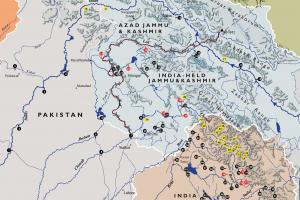Applications of GIS in Civil Engineering

Applications of GIS in Civil Engineering
- Transportation
- Watershed analysis
- Remote sensing
- Wastewater, stormwater, and Solid Waste Management
Applications of Geographic Information Systems in Transportation Engineering
Location-Allocation
- Finding a subset of locations from a set of potential or candidate locations that best serve some existing demand so as minimize some cost
- Locate sites to best serve allocated demand
- Application areas are warehouse locations, fast food locations, fire stations, schools
Location-Allocation Inputs
- Customer or demand locations
- Potential site locations and/or existing facilities
- Street network or Euclidean distance
The best sites
- The optimal allocation of demand locations to those sites
- Lots of statistical and summary information about that particular allocation
Synergy between spatial data and analysis
- Imagine you are a national retailer
- You need warehouses to supply your outlets
- You do not wish the warehouses to be more than 1000 km from any outlet
Other Transportation Applications
Planning & locating new roadway corridors
- Transportation
Applications of GIS in different Civil Engineering Sectors
Geographic Information Systems (GIS) have a wide range of applications in civil engineering. Here are some key areas where GIS is used in the field of civil engineering:
Site Selection:
GIS can be used to analyze factors such as slope, soil suitability, proximity to infrastructure, and environmental constraints to identify the best site for a new housing development or industrial facility.
Land Use Planning:
GIS helps civil engineers and urban planners in analyzing and visualizing land use patterns, zoning regulations, and development potentials. It aids in making informed decisions about land allocation for different purposes such as residential, commercial, industrial, or recreational areas. GIS helps in visualizing existing land use patterns, zoning regulations, and demographic data to support decision-making in urban planning. For example, it can be used to identify areas suitable for commercial development based on factors like population density, transportation accessibility, and market demand.
Environmental Impact Assessment:
GIS can be used to map sensitive habitats, water bodies, and protected areas. It helps in analyzing the potential impact of a proposed construction project on the environment, such as determining the distance between new development and a wetland or assessing the impact on wildlife corridors.
Infrastructure Management:
GIS aids in maintaining an inventory of infrastructure assets such as roads, bridges, and pipelines. It can track the condition of these assets, schedule maintenance activities, and prioritize repairs based on factors like asset age, condition assessment data, and historical maintenance records.
Transportation Planning:
GIS can analyze traffic flow patterns, congestion points, and accident data to optimize transportation networks. For example, it can be used to identify the best locations for new roads or public transportation systems based on population density, existing infrastructure, and travel demand.
Flood Modeling and Management:
GIS helps in creating flood hazard maps by integrating elevation data, rainfall patterns, and hydraulic models. It can identify flood-prone areas, simulate flood scenarios, and support the design of flood control measures like levees or stormwater management systems.
Construction Management:
GIS can be used on construction sites to track the location of equipment, materials, and workforce. It aids in coordinating activities, monitoring progress, and ensuring that construction activities comply with project plans and specifications.
Geotechnical Engineering:
GIS can integrate geotechnical data such as soil types, borehole information, and geological maps. It helps in identifying areas with unstable soil conditions, analyzing slope stability, and determining suitable foundation designs for infrastructure projects.
Water Resource Management:
GIS enables the analysis of water supply networks, watershed boundaries, and hydrological data. It can be used to determine water sources, model water availability, and assess the impact of land use changes on water quality and quantity.
Emergency Management:
GIS supports emergency planning and response by mapping critical facilities, evacuation routes, and vulnerable areas. It can assist in resource allocation, emergency communication, and real-time monitoring of incidents like natural disasters or public health crises.
These are just a few examples of how GIS is applied in civil engineering. The versatility and spatial analysis capabilities of GIS make it a valuable tool for various tasks throughout the lifecycle of civil engineering projects.












